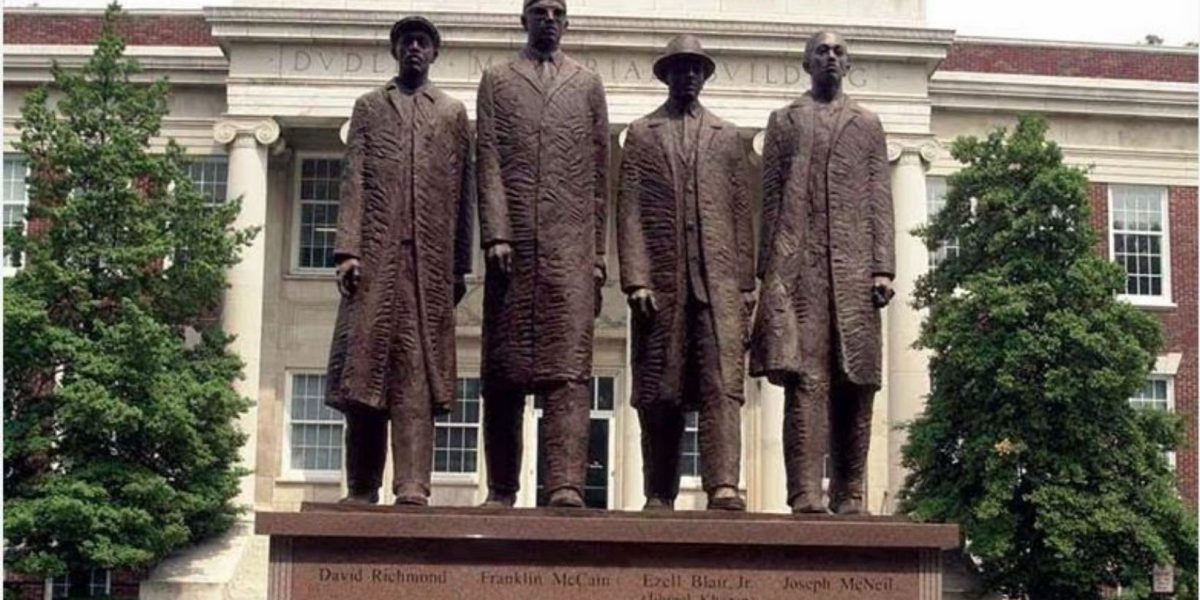Pioneering Civil Rights through Nonviolent Protest
In the annals of the American civil rights movement, the Greensboro Sit-Ins stand as a pivotal moment that fueled the flames of change. Occurring in 1960, these peaceful protests, initiated by four African American college students in Greensboro, North Carolina, sent shockwaves across the nation, challenging the deeply entrenched segregationist norms of the time. This blog explores the significance of the Greensboro Sit-Ins, their impact on the civil rights movement, and the enduring legacy they left behind.
Background
The 1960s marked a turbulent period in American history, with racial segregation and discrimination deeply embedded in the fabric of society, particularly in the Southern states. Greensboro, like many other Southern cities, adhered to the Jim Crow laws, enforcing racial segregation in public facilities, including restaurants. Frustrated by the prevailing injustice, four students from North Carolina Agricultural and Technical State University—Ezell Blair Jr., David Richmond, Franklin McCain, and Joseph McNeil—decided to take a stand.
The Sit-Ins Begin
On February 1, 1960, these four brave students walked into the Woolworth’s department store in Greensboro and sat down at the whites-only lunch counter. Politely requesting service, they were met with hostility and refusal. Undeterred, they continued their peaceful protest, returning day after day. Their actions sparked a wave of similar sit-ins across the South, as college students, both black and white, joined forces to challenge segregation.
Nonviolent Resistance
Central to the success of the Greensboro Sit-Ins was the commitment to nonviolent resistance. Influenced by the teachings of Mahatma Gandhi and inspired by the Montgomery Bus Boycott led by Martin Luther King Jr., the students adhered to principles of peaceful protest. Their dignified demeanor in the face of aggression garnered national attention, highlighting the moral bankruptcy of segregation.
Media Coverage and Public Outcry
As the sit-ins gained momentum, media coverage played a crucial role in exposing the harsh reality of racial discrimination. Images of young, determined students peacefully sitting at lunch counters, enduring verbal and physical abuse, captured the nation’s conscience. The public, shocked by the injustice on display, began questioning the legitimacy of segregationist policies.
Impact on the Civil Rights Movement
The Greensboro Sit-Ins ignited a spark that fueled the broader civil rights movement. The Student Nonviolent Coordinating Committee (SNCC) was formed, uniting young activists in their pursuit of racial equality. The sit-in tactic spread like wildfire, leading to desegregation in various public spaces. The success of the Greensboro Sit-Ins demonstrated the power of nonviolent protest in challenging deeply rooted social injustices.
Legal and Social Change
In the wake of the sit-ins, legal challenges were mounted against segregationist policies. In 1964, the Civil Rights Act was enacted, prohibiting discrimination based on race, color, religion, sex, or national origin. The Greensboro Sit-Ins played a pivotal role in dismantling the legal framework that upheld racial segregation.
Legacy
The legacy of the Greensboro Sit-Ins endures as a symbol of courage, resilience, and the transformative power of nonviolent protest. The events of 1960 inspired a generation of activists, fostering a sense of collective empowerment. The courage displayed by those four students in Greensboro contributed significantly to the dismantling of segregationist policies and laid the foundation for a more inclusive and just society.
Conclusion
The Greensboro Sit-Ins remain a beacon of hope in the struggle for civil rights. By challenging the status quo through nonviolent means, these students sparked a movement that reshaped the American social and legal landscape. Their legacy serves as a reminder that ordinary individuals, driven by a commitment to justice, can bring about extraordinary change.





